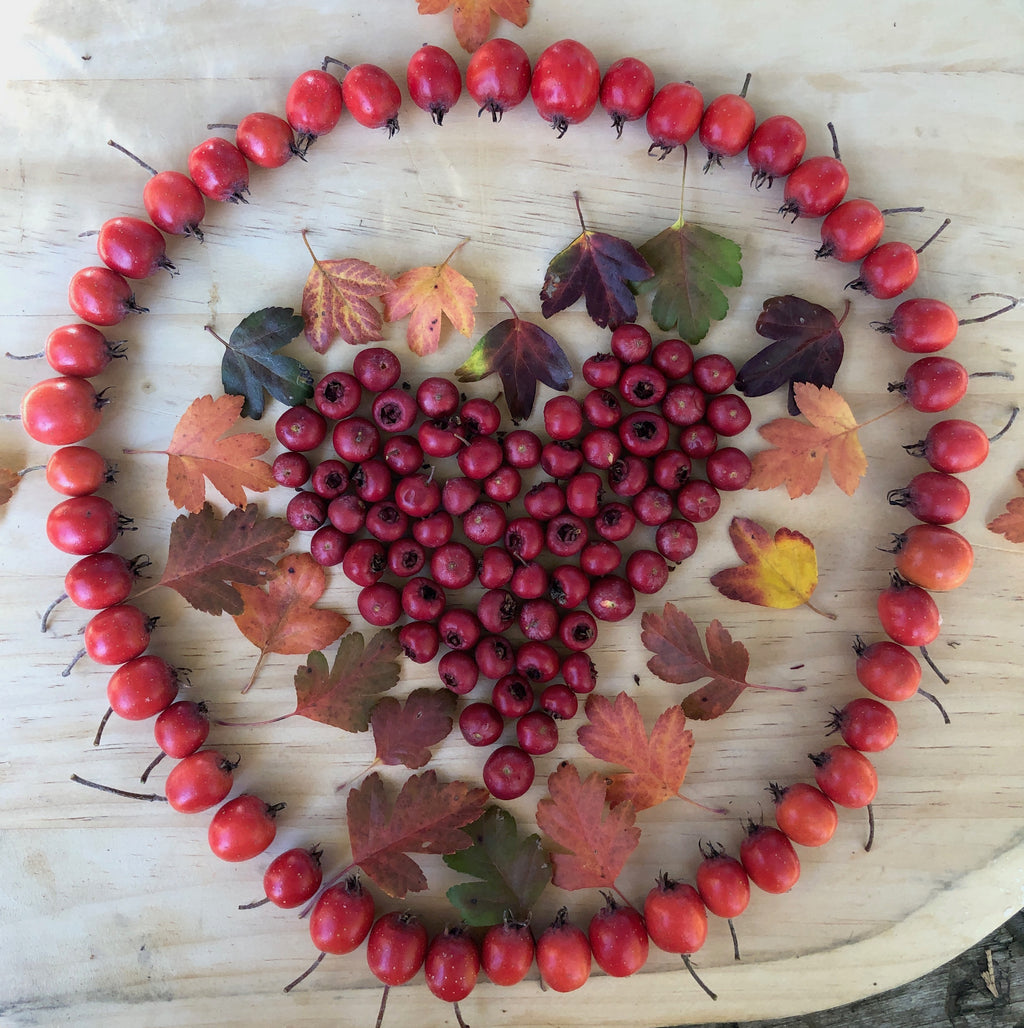Fall is approaching here in Oregon, with that come many activities in the herb garden. There are roots to harvest, culinary herbs to dry and Hawthorn berries to collect. It is time to take stock of the year and decide what to space to make and what seeds to plant the coming year.

There are many medicinal herbs that require little forethought besides a bit of time and space and sunshine. The one I am writing about today is no such creature. Hawthorn. Such an epic plant. It was one of the first herbs that I felt the medicinal effects of, one of the first herbs that I fell in love with on my journey through herbal medicine. Like so many of our favorite tonic plants, Hawthorn is part of the Rosacea family. It has a rich mystical history intertwined with multiple pagan mythologies.
Hawthorn has a five petaled flower that ranges from white to pink to red depending on the cultivar. The most common medicinal variety is Crataegus monogyna, which is native to parts of Asia, Africa and Europe. This species has one seed within the berry/haw; therefore, it is referred to as “monogyna” meaning one seed. The variety we have here in Oregon and other parts of North America, Crataegus douglasii, has darker, blackish red haws with multiple seeds and bright white flowers. There are many different species cultivated and wild of Hawthorn.
Hawthorn trees can grow quite large in old age but are generally known more as a large shrub. They make great hedge plants and can be layered to form a living fence. In the book The Tree by Colin Tudge he explains, “layered- the branches cut halfway across, then laid sideways- to form an impenetrable thorny barricade”. The new growth has thorns, but the old bark does not. They flower in the beginning of May, hence another common name of “Mayflower”, a sure sign that Spring has begun. The leaf, flower and the haw are all used medicinally, made into glycerites, teas, cordials, wines, decoctions, flower essence, jams and tincture. It is just about time to start harvesting the Hawthorne berries here, I wait until October when the berries are fully mature. What a beautiful task harvesting and drying those ripe red haws from heavily laden trees.
According to Women’s Encyclopedia of Natural Medicine by Tori Hudson, N.D, “Hawthorne Leaves, berries and blossoms contain flavonoids. One of these, proanthocyanidin, is largely responsible for the cardiovascular effects of Hawthorne”. She goes on to explain that Hawthorn can reduce blood pressure, prevent LDL oxidation, improve blood supply to the heart and help to regulate cardiac rhythm. I personally always add Hawthorne into my routine when I am feeling anxious or sad. Hawthorn is contraindicated for pregnant people, people who are lactating and for children according to “Health Effects of Hawthorne” written by Stephen Dahmer, MD and Emilie Scott, MD.
Hawthorn is a brilliant herb found in many home apothecaries but It requires a lot of patience to germinate and can take from 6-18 months to sprout. It is tricky to plan ahead to grow things that take such a long time to germinate. The easiest way to propagate Hawthorn is definitely from cuttings. The clone will grow exceptionally more quickly than a plant started from seed.
However, the importance of starting plants from seeds is that it adds to the genetic diversity of a species, instead of just being a copy of another plant. Hawthorn seeds require periods of heat and cold stratification. With the right combination of these processes, you can hurry along the germination process by breaking the seeds grip on dormancy. The most comprehensive study on Hawthorn germination I have read is, “Breaking of seed dormancy, germination and seedling emergence of the common hawthorn (Crataegus monogyna Jacq.)” written by polish scientist Barbara Bujarska-Borkowska. Her research found that “the combination 20~30°/3°C for 16+16 weeks proved most effective.” So essentially a 16-week warm stratification between 68-86° F followed by a 16-week cold stratification at about 37°F. If you follow this protocol before you sow your seeds then you will have excellent germination rates. Otherwise, I suggest you toss your Hawthorne seeds on the edge of a forgotten compost pile and eventually you will find little trees growing there.
≈ by Taryn Hunter
References
Bujarska-Borkowska, B. (2002). "Breaking of seed dormancy, germination and seedling emergence of the common hawthorn (CrataegusmonogynaJacq.)." Dendrobiology, 47, 61–70.
Dahmer, S., & Scott, E. (2010, February 15). "Health effects of hawthorn." American Family Physician. https://www.aafp.org/afp/2010/0215/p465.html. Hudson, T. (1999).
Women's Encyclopedia of Natural Medicine: Alternative therapies and integrative medicine. Keats Publishing. Tudge, C. (2007).
The Tree: A natural history of what trees are, how they live, and why they matter. Three Rivers Press.


Susan
Thank you for taking time to send this informative talk about hawthorn! Such a useful plant with so much history. It gives me incentive to harvest the haws and utilize this beautiful tree/shrub.